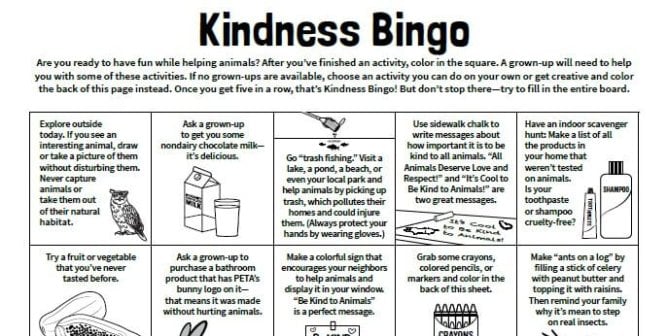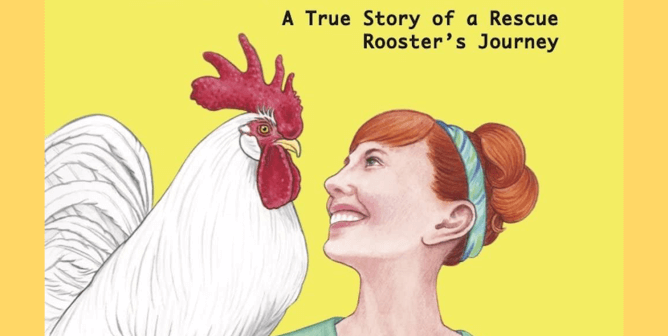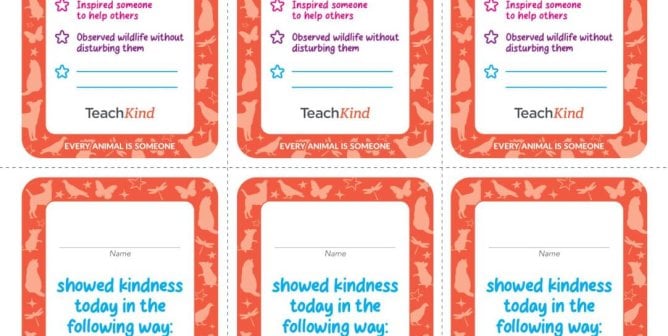This DIY ‘Empathy Ball’ Game Will Be a New Favorite Classroom Icebreaker
Playing an icebreaker game is a fun way to start the school year and help your students get to know each other (and help you get to know them, too). You’ve likely already come across some version of a beach ball activity, but this one has an animal-friendly, anti-bullying, empathy-building twist. Using a do-it-yourself empathy ball is great for helping your class open up and connect with each other—making it a useful tool all year round.
All you’ll need to get started is a medium- to large-sized inflated beach ball, a permanent marker, and a good list of thought-provoking, empathy-focused questions. Pro tip: You can usually find beach balls on the cheap at dollar stores, in the dollar section of big-box stores, or on Amazon.
*****
Step 1: Create Your Empathy Ball
On an inflated beach ball, use a permanent marker to write questions spread out over the surface. In this case, the questions should inspire students to think about empathy, anti-bullying efforts, and having compassion for animals.
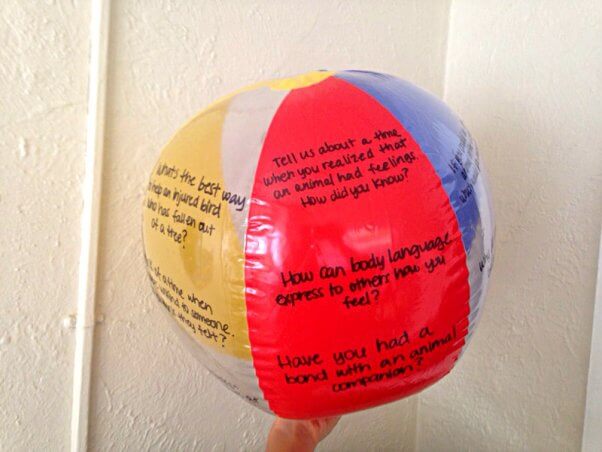
Here are some examples of questions you could use:
- Since animals can’t speak our languages, how can we figure out how they feel?
- How can body language express to others how you feel?
- Tell us about a time when you realized that an animal had feelings. How did you know?
- Think of a time when you were unkind to someone. How do you think they felt?
- If you could be any animal in the world, which would you choose and why?
- When do you feel like you can truly be yourself?
- If you saw an injured stray cat in your neighborhood, what would you do?
- What are the “masks” you put on when you’re at school or with friends?
- Why should you speak up or tell an adult if you see someone being mean to a person or an animal?
- What’s the best way to help an injured bird who has fallen out of a tree?
- Why do some people bully others?
- Have you had a bond with an animal companion?
Note: These questions can be used for a range of grade levels, but feel free to adjust them so that they’re suitable for your own students.
Step 2: Play the Game!
First, get your whole class together and stand in a circle, facing each other. Start by going around the circle and having everyone share their name with the class as a refresher. Remind students that this activity is a chance to bond, connect, and learn how to be kinder to each other.
Now it’s time to bring in the empathy ball! Start the game yourself by saying your name again, picking up the ball, and reading aloud the question that is under or nearest to your right thumb. Answer the selected question, and be honest and heartfelt—your vulnerability can set the tone for students and help them feel more comfortable sharing openly.
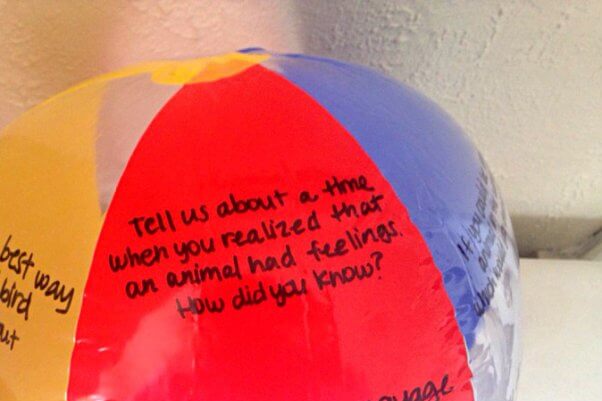
Now it’s time to pass the ball to someone else. Say the person’s name as you so throw it. (If students forget each other’s names, instruct them to use other verbal and visual cues to give a heads-up.) Once students catch the ball, they’ll repeat the process by saying their name, reading aloud the question under or nearest to their right thumb, and sharing their answers. Then they’ll pass the ball to the next person of their choosing, and so on. Be sure to tell them to avoid picking someone who has already answered—this ensures that everyone gets the chance to answer a question.
Note: If you’re using this activity later in the school year, the portions that focus on learning names can be omitted, since they’ll already know them.
Step 3: Wrap Up and Reflect
After the game is over and everyone has had an opportunity to answer a question, take some time as a class to reflect upon any issues that may have come up during the game. For example, you could go over the proper course of action that students should take if they see an animal in need (tell an adult ASAP, have them contact the police or animal control if needed, and make sure the animal gets help) or if they witness bullying at school. Discuss the difference between telling an adult something in order to get help and “tattling” on someone simply to get them in trouble. And address any emotional issues that may have arisen, being sure to create a safe, inclusive space for students who may feel vulnerable after such an activity.
*****
We hope this fun icebreaker will get your students to flex their empathy muscles and be more considerate of animals and fellow students. And remember: It’s also beneficial to use this as a bonding activity later in the year, giving students an opportunity to answer new questions—or perhaps answer the same ones that were on the ball earlier with a new perspective.
